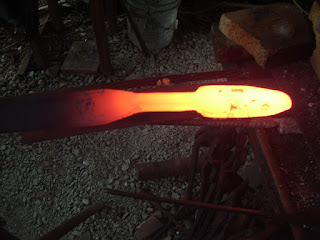


Another day in the shop: As a new handrail is being laid out on an extension to the stake table and components forged and cut, I found time for a few little projects in between.
Below, Chainsaw chain becoming a billet for a kitchen knife.
Also, three new vases done as a warmup- still in the thirties, it's spring-Vember in NW Washington.
Social hour at ye Blacksmythe Shoppe, all pets welcome. Well, almost all.



.jpg)

























.jpg)





















